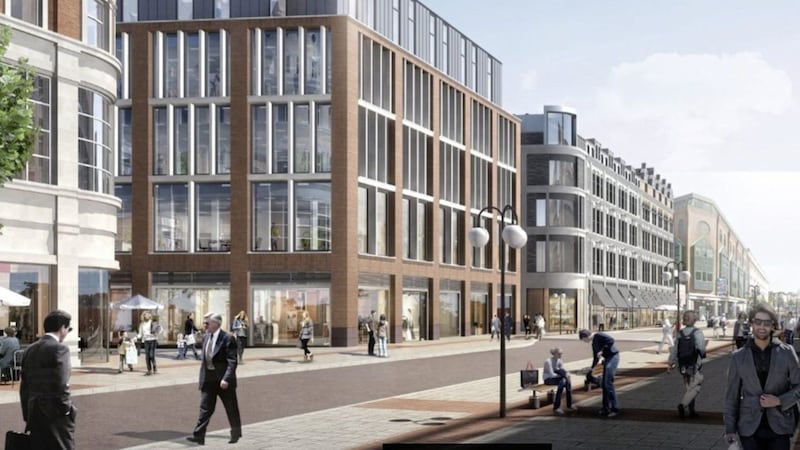LAST Tuesday night Belfast City Council passed revised plans for the ridiculously named Tribeca development. While the £500 million development won’t now sport a 27-storey block of flats, this in no way improves what will be a cement and glass monstrosity, devoid of any architectural merit.
Planning in and around Belfast has, for many decades, seen decisions where ‘green belt’ miraculously morphed into ‘brown belt’, with buildings of historical and cultural merit unceremoniously demolished to make way for some developer's money-making scheme.
What makes the Tribeca development all the more infuriating is the fact that, with a little more imagination and slightly more money, they could have built something which would have stood as a credit to both the developers and the city.
Tribeca at least managed to unite the citizens of Belfast, with 443 written objections to what many view as yet another architectural scar on the city. The independent heritage body, Ulster Architectural Heritage, said that while “regeneration is long overdue for this damaged area, blighted by developer land banking, this type of master planning is not regeneration… it is simply exploitation”.
The Department for Communities’ Historic Environment Division also commented that "aspects of the proposal fail to satisfy planning policy around build heritage".
Not that any of this mattered when it came to Belfast City Council, whose decision to pass Castlebrooke Investments’ revised proposal seemed to be based solely on the fact it was slightly better than their previous plan.
And so the architectural homogenisation of our city continues. The combined effects of online shopping, extortionate business rates and opportunistic developers means everywhere will soon look like everywhere else.
Stripped of all cultural originality, a photo of central Belfast will be interchangeable with Birmingham or Bristol. Each city will have the obligatory line of fast-food restaurants, bookmaker's and charity shops, broken only by blocks of luxury apartments bought as investments, which will lie empty as Belfast’s homeless shelter in their doorways.
* * *
LAST week, in this column, I sarcastically commented that I fully expected our recently returned MLAs to push for a pay rise within six months. As it turned out, it only took two weeks for it happen, albeit arising from the now-defunct Independent Financial Review Panel, whose recommendation in 2016 for an annual pay rise was blocked when Stormont was in suspension.
The return of devolution means our MLAs were due to pocket a £1k bonus for the time they weren’t sitting in the assembly.
While all five major parties have asked for the wage increase to be deferred, I’d argue it should be cancelled, with MLAs voluntarily accepting a pay freeze for at least three years – the length of time they received public monies while not working.
That such an increase is even being considered highlights the disconnect between politicians and the people they purport to represent. While some MLAs have said they’d donate the £1k increase to charity, none have suggested giving their unearned salary from the two years the assembly was in abeyance.
Anywhere else, the reputational damage done would result in the removal of all our MLAs at the next election but here, that’s never going to happen. With Pavlovian predictability, in two years, you, the electorate, will once again vote along tribal lines, guaranteeing no change.
Both Sinn Fein and the DUP realise this, and so our present nauseating sectarian status quo will endure, no matter how incompetent or corrupt their administration proves to be.
If anyone doubted the assembly gravy train was back up and running, the fact that special advisers are soon to be back in situ says it all. Considering the havoc caused by Spads during the RHI scandal, the statement from Finance Minister Conor Murphy that Spads act as "a critical part of the team supporting ministers" is laughable.
Murphy’s new spad code of conduct was immediately adopted by the assembly, indicating they fear the imminent RHI report from Sir Patrick Coghlin and what it may contain regarding their highly paid partisan political advisors.
One question nobody seems willing to ask is, does a population our size need more than 400 councillors and 90 MLAs? One contributor on my social media commented that Birmingham, which has a similar population to Northern Ireland, gets along with 101 councillors.
With no sign of Tory austerity ending, and local parties willing to enforce public-sector cuts, those cuts should surely be among our politicians instead of our teachers, nurses or civil servants. Imagine the turnout if sacked politicians called a rally; you’d be able to accommodate their supporters in one minibus.








